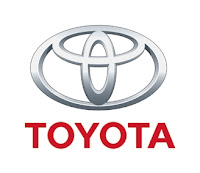Typefaces In The Working World
In the working world today image is everything. Whether it be to attract customers to purchase products or to present information clearly, the way in which we present this is key. The main things people think about when picking a font is how easy it is to read, and unique it is at the same time.
There are a few variations of font in businesses that are easily recognised for their simple typeface, and they all promote different businesses in which sell different products.
These fonts all have similarities in which are easy to spot, the majority of these examples are black bold typefaces, some more bold than others and some in which alter the colour ( Toyota and Jeep for example )


Typeface vs Font
The difference between a typeface and a font may be confusing at first, however a typeface is the design of the alphabet, different shapes make up the typestyle. The most popular typeface currently is Helvetica, followed by multiple others as you can see in the example to the right
A font is the digital file in which describes and contains the typeface. This almost tells the computer/ printer how to display the typeface.
Serif & Sans-serif
A typeface without serifs is called a sans-serif ( 'Sans' translated from French to English with the meaning 'without' ) Serifs are most times easily recognisable as you can see in the image
The most commonly used serif font is Times New Roman and the most common sans- serif font is Arial.
Work in which is done in order to be printed is often done in Serif fonts as they are easier to read, this is because Serif fonts make the individual letters a lot more distinctive therefore easier for our brains to process words at a quicker pace. Without the serif our brains are required to spend a longer period of time identifying the letter as the shape is less distinctive.
Typically serif fonts are used for the body of a piece of text, leaving sans-serif fonts for headings, subheadings , captions etc.
Typically serif fonts are used for the body of a piece of text, leaving sans-serif fonts for headings, subheadings , captions etc.
Sans-Serif on the other hand is used for online work, this is because of the resolution size being low, if you were to use serif fonts for online work the smaller characters will be more difficult to read compared to the sans-serif fonts.
Type Family
In typography a typeface is also referred to as 'font family'. There are multiple variations in which contain common design features, each font of a typeface has a specific size, weight, width , slant etc.Back in the early 16th century, when typefaces were first invented , there was no notion to have a family of fonts in which correlated to one another. It was only in the 1700's that typeface families were invented, this is when they paired Roman and Italic together for example.
Parts Of A Typeface

Upper Case - Capital Letters.
Lower Case - Lower Case Letters.
Base Line - Bottom of majority of letters.
Serif - The small decorative 'flick'.
Ascender - The part of the letter that extends above the top.
Descender - The part of the letter that extends below the base of the letter.
X-Height - The height of lower case letters.
Ligature - When two letters are joined together to form one glyph.
Kerning vs Tracking
Kerning adjusts the letters closer together (negative spacing) and Tracking adjusts the letters further apart (positive spacing)
What Is A Grid...
In regards of typography, a grid is a structure in which is made up from intersecting straight lines, these being vertical, horizontal and angular. Grids are used to organise graphic elements on a page (glyphs, paragraphs)











No comments:
Post a Comment